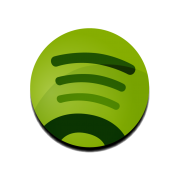Twisting again in the digital music mix
Australia’s digital music space got a little more crowded this week with the launch by Australian Radio Network of the iHeartRadio service.
iHeartRadio joins the likes of Pandora, Spotify, rdio (part owned by DMG Radio), Songl (part owned by Southern Cross Austereo, Nine Entertainment Co, Universal Music and Sony Music), Deezer, as well as branded music services from the likes of Coles and JB Hi-Fi. It is rumoured that Apple’s iRadio will also launch into Australia within the next 12 months.
ARN National Digital director Kate Beddoe told Business Spectator that Australia was the “logical place to expand the product outside the US” due to ARN’s joint ownership structure with US company Clear Channel, which owns the iHeartRadio brand and service in the US market and has been operating it since 2008.
Unlike rdio or Spotify, iHeartRadio is not a music-on-demand service. It is a radio-based product where users can create customised stations based on their preferences and music history. The service has a catalogue of over 15 million songs, and it is this depth that could allow iHeartRadio to bring domestic parent company ARN access to a completely new audience. ARN’s heartland has traditionally been in the 35-54 audience through its classic hits focused Mix, Gold and WSFM brands, iHeartRadio brings the opportunity to recruit younger listeners, specifically in the 18-34 demographic, which would boost the company's advertising appeal. “In the US, 43 per cent of the audience is 18-34 and we expect to see similar take-up here,” says Beddoe.
The service will allow listeners to access not only ARN’s broadcast services, but also create their own stations and choose from a variety of themed stations. Users also have the ability to ‘tune’ their discovery level – from familiar to mixed – depending on their taste for new music. Advertisers will also be able, at a cost, to create their own branded stations. The brand has expanded in the US to both on-air contexts within Clear Channel's broadcast assets, as well as a music festival held annually that has seen the likes of Elton John, Tiesto, Katy Perry, Drake and Lady Gaga.
Strategically iHeartRadio is a welcome good news story for ARN and its parent company APN News and Media. It gives ARN a seat at the table in the emerging digital music area – which despite being presently small when it comes to revenues will become increasingly important as radio digitises – and it allows the company to use its existing infrastructure to launch without a large cost expense. ARN already has large sales teams in all major markets, teams who can add the digital iHeartRadio advertising product to broadcast radio advertising it is already selling. This is a significant advantage – setting up a well credentialed sales team in key markets can be a $2-$4 million dollar expense. In this capacity iHeartRadio has an advantage over Pandora and Spotify, which are operating with much smaller sales teams and without the current ability to integrate its digital radio or on demand sales with any broadcast offering.
Beddoe claims that instead of iHeartRadio being a standalone division, it will be fully integrated into how ARN operates. “Our approach of connecting iHeartRadio to our sales team also goes across content, marketing, social media and technology, so it is part of how ARN thinks about everything we do.”
ARN’s radio assets and APN’s outdoor and press assets also provide a valuable leg-up when it comes to generating initial awareness and usage of the product. In a crowded market, marketing and advertising matter, Beddoe feels this is key advantage for ARN and will play a significant role in the success and consumer differentiation of the iHeartRadio product.
“What I’ve seen play out time and again when there are a plethora of digital services appear, those that have deep connections with local media and a strong international roadmap find the fastest way out of the early adopter bubble and into the mainstream," she says. "You can see this from the growth in the US where iHeartRadio has 60 million visitors every month and 34 million registered users. In fact iHeartRadio reached 30 million registered users faster than Twitter, Pinterest, Spotify and Pandora because of the connection with live and local radio.”
Ben Shepherd is a media and technology consultant. He can be found on LinkedIn and on Twitter.
















